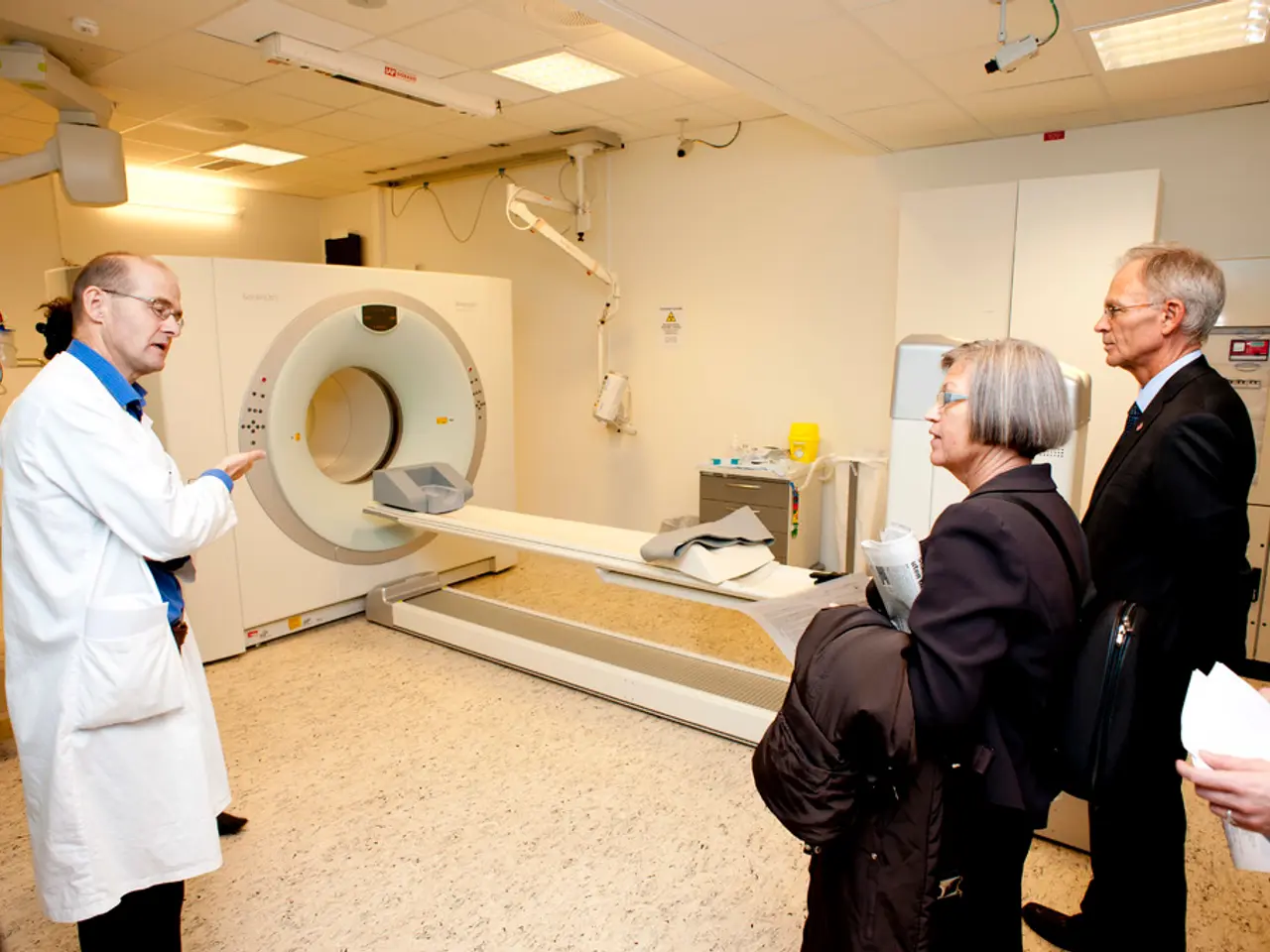Medical Institution Held Responsible for Expensive Patient Slip-Up Incident
An 82-year-old man is set to receive $3.2 million after a Denver jury found a hospital at fault for a fall following his spinal fusion surgery in March 2024. The fall, which occurred during the transfer of the patient from a CT scan table to a hospital bed, has brought more attention to the issue of preventable patient falls in hospitals, particularly among elderly patients recovering from spine procedures.
The jury ruled in favor of the patient, finding that hospital workers were responsible for the accident. Questions often arise about the number of people involved in the patient transfer, the use of proper lifting tools, and adherence to policies when falls occur right after surgery.
Falls in hospitals can occur during various post-surgery activities, such as bathroom trips, physical therapy, or while getting into wheelchairs or onto exam tables. These incidents are a common and significant source of inpatient harm. Falls are the leading cause of preventable harm in hospitalized older adults, with injurious falls occurring frequently in this population.
The case may prompt hospitals to review their internal safety practices, as such incidents can have a lasting impact on a patient's recovery and long-term health. The fall resulted in a fractured spine that required another surgery to fix the damage, likely adding to the patient's pain, recovery time, and possible long-term complications.
Juries tend to take such cases seriously, especially when it's clear the patient was in no position to protect themselves. Staff training, patient handling equipment, and post-surgery protocols may all be scrutinized in such cases. When staff members are rushed, tired, or undertrained, simple actions can turn dangerous.
Hospitals often invest in advanced technology and surgical tools, but basic tasks like moving a patient can still go wrong. Legal actions related to falls in medical settings are not rare, often involving elderly patients and leading to permanent disability.
The outcome of this case remains uncertain regarding whether it will lead to changes in hospital safety practices. However, the case serves as an example of a patient taking their complaint to court and winning. It underscores the importance of vigilance in patient care and the need for hospitals to prioritize safety measures to prevent such incidents.
Patients who suffer from preventable falls may not always know they have grounds to speak up or take legal action. It is crucial for patients and their families to be aware of their rights and to advocate for their safety during their hospital stays.
References:
[1] Burt, G. W., & Rizzo, J. A. (2014). Preventing patient falls in the hospital: an evidence-based approach. Mayo Clinic proceedings, 89(11), 1456-1463.
[2] Burt, G. W., & Rizzo, J. A. (2010). Preventing patient falls in the hospital: an evidence-based approach. Mayo Clinic proceedings, 85(1), 47-53.
[3] National Patient Safety Foundation. (2013). National Database of Nursing Quality Indicators. Retrieved from https://www.ndnqi.com/
[4] National Institute for Health and Care Excellence. (2016). Falls in older people: assessing risk and prevention. Retrieved from https://www.nice.org.uk/guidance/ng16
[5] National Institute on Aging. (2014). Preventing falls in older adults: a guide for older adults and families. Retrieved from https://www.nia.nih.gov/health/preventing-falls-older-adults-guide-older-adults-and-families
- The medical community should focus on implementing proper workplace-wellness policies to prevent chronic diseases and medical conditions, such as chronic kidney disease, cancer, and neurological disorders, in hospitals.
- The prevention of respiratory conditions, digestive health issues, eye-health problems, and hearing impairments should be part of the overall health-and-wellness focus in hospitals.
- The escalating number of autoimmune disorders has emphasized the need for hospitals to invest in various therapies-and-treatments for these conditions.
- Addressing health-and-wellness issues extends to an individual's cardiovascular health, with Medicare taking an increasing interest in covering preventive services to slow the progression of chronic diseases.
- CBD has shown promise as a potential treatment for various medical conditions, including chronic-diseases and neurological-disorders, but further research is required to establish its safety and efficacy.
- Given the impact of falls on a patient's recovery and long-term health, hospitals should prioritize measures to improve their cardiovascular-health, digestive-health, or eye-health, in conjunction with reducing the risk of falls.
- In addition to falls, skin-conditions can develop in hospitals, which may require the use of special treatments and care. Reducing the risk of these issues is crucial for ensuring the overall health-and-wellness of patients.
- The fitness-and-exercise regimes for patients recovering from operations, such as spine procedures, are often overlooked in the rush of hospital functioning. Emphasizing these programs can help the patients to regain their mobility and independence.
- Collaborative efforts between hospitals, medical institutions, the government, and patient advocacy groups are essential in developing comprehensive strategies for preventable patient falls, improving the overall health and wellbeing of patients and reducing the instances of permanent disability.




